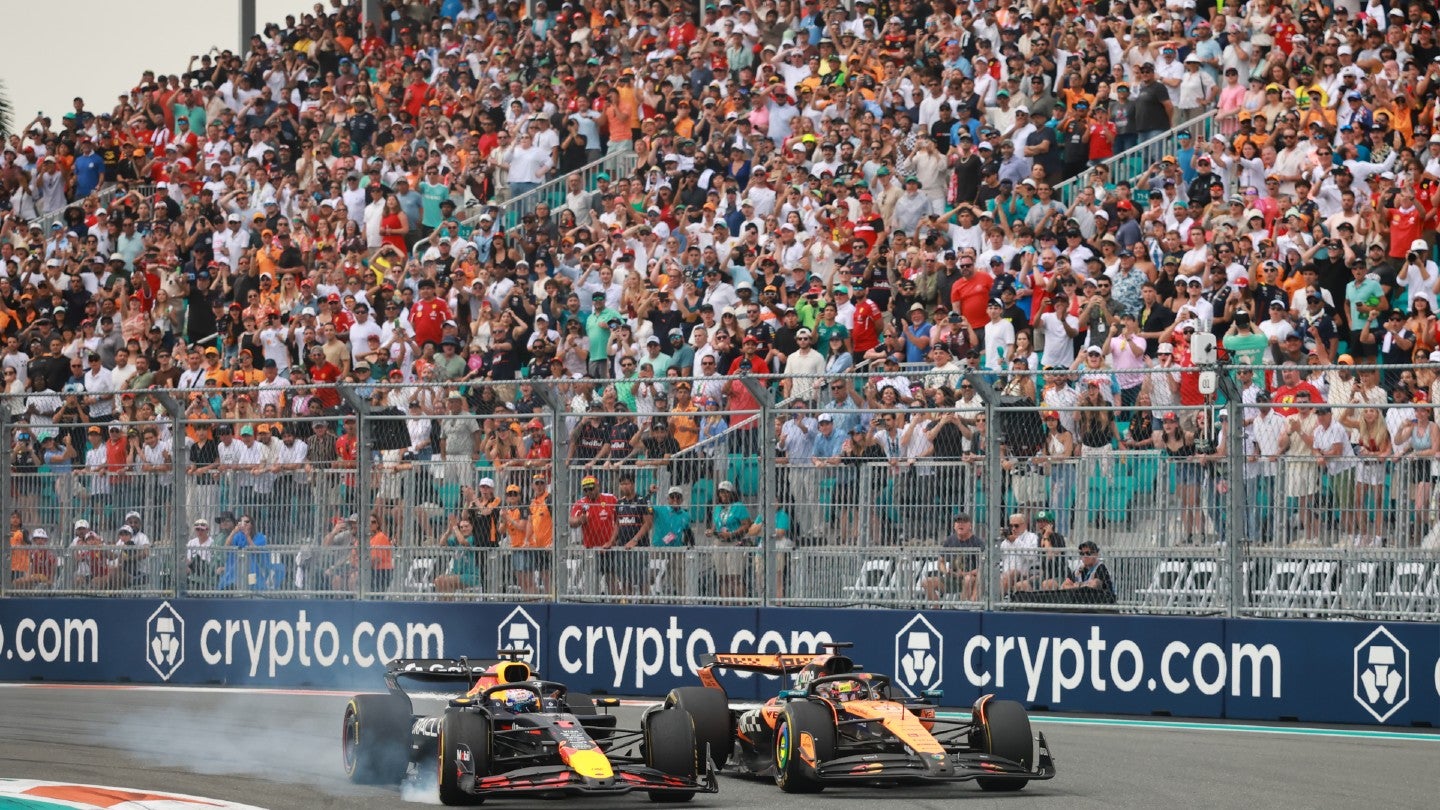
The recently staged 2025 Miami Grand Prix from motor racing's iconic Formula 1 (F1) saw a major drop in viewership, despite last year's edition delivering record audience numbers.
An average of 2.17 million viewers watched the April 4 race on national network ABC, the third-largest F1 audience in the US ever, but crucially down 29% on the 2024 edition.

Discover B2B Marketing That Performs
Combine business intelligence and editorial excellence to reach engaged professionals across 36 leading media platforms.
The 2024 race was watched by the largest average US TV audience in F1 history – 3.1 million – and also secured a live attendance record of 275,000.
The 2024 race had a boost in that it led into NBA playoff coverage, something the 2025 race was not able to benefit from, with ABC choosing the race over the NBA altogether.
NBA playoff coverage of the game-7 fixture between the Houston Rockets and Golden State Warriors instead going to rival TNT, where it averaged 6.63 million viewers and was the most-watched NBA playoff first-round game on cable TV since 2009, effectively costing ABC millions of viewers.
Peaking at 2.4 million viewers, the race also failed to top the weekend’s NASCAR Cup Series race, aired on Fox-owned FS1, which averaged 2.5 million.

US Tariffs are shifting - will you react or anticipate?
Don’t let policy changes catch you off guard. Stay proactive with real-time data and expert analysis.
By GlobalDataEach of the four previous Miami Grand Prix races, all aired in the US on ABC, has led into an NBA playoff fixture, and as such, while its 29% fall this year will hurt the broadcaster, the fact that the race remains the third most-watched in the US without NBA help is promising for the sport’s continued growth in the US market.
This is especially prevalent for the Miami Grand Prix, which last week (May 2) agreed a long-term extension that will see it remain on F1 calendars through 2041.
Miami only began hosting F1 action in 2022, and according to F1, over $1 billion in terms of economic impact has been generated for the local economy since then.
When speaking to Sportcal (GlobalData Sport) in April, Aston Martin F1 chief commercial officer Jefferson Slack cited the US as the driving force behind F1’s growing commercial strength.
Slack points to the Miami Grand Prix, first run in 2022, as the turning point. Where there had only been one trip to the US per year, from then on, there were two, and now three, with the addition of the Las Vegas Grand Prix.
What this meant, he adds, is that F1 now has more of a presence than ever in US time zones, and where races would previously occur at night or early in the morning now take place at prime viewership slots, on more prominent broadcast outlets.
He commented that it also makes sense for F1 to expand in the US to satiate its commercial partners, saying: “For most companies in the world, if they're global, if you don't have a US presence your marketing value to them certainly diminishes significantly, whereas if you do have a US/Pacific, presence, then all of a sudden you are truly global.”
For more insight on the commercial side of Formula 1, read the GlobalData Sport Business of Formula 1 2025 report for analysis on the series’ sponsorship and media landscape, social media, Grand Prix, and more.




